

|
All of the lava tube features shown in the other sections of the Virtual Lava Tube are primary features, which formed from the molten lava while the cave was actively forming or in its cooling phase. But during or after a cave’s cooling phase, minerals may deposit as crusts, crystals, or as more familiar speleothems like stalactites and stalagmites. Deposits can occur in two major ways. As the cave initially cools, minerals can condense from gaseous vapors, typically forming crusts or small crystals. The deposits in the first two photos probably formed that way. After the cave has formed, water from rainfall begins to seep in through the porous lava. Initially this will dissolve away crusts formed from gaseous vapors, as we noted when visiting caves less than two years old on the flanks of Kilauea. But water passing through the rock may slowly leach out minerals that can be re-deposited inside the cave. The most common minerals in lava tubes tend to be sulfate minerals such as gypsum (calcium sulfate) and thenardite (sodium sulfate), but calcite (calcium carbonate) is common as well. Unlike in limestone caves, dissolved minerals are generally deposited from simple evaporation rather than off-gassing of carbon dioxide, the mechanism behind most dripstone deposits in solution caves. The third photo shows evaporitive deposits. |
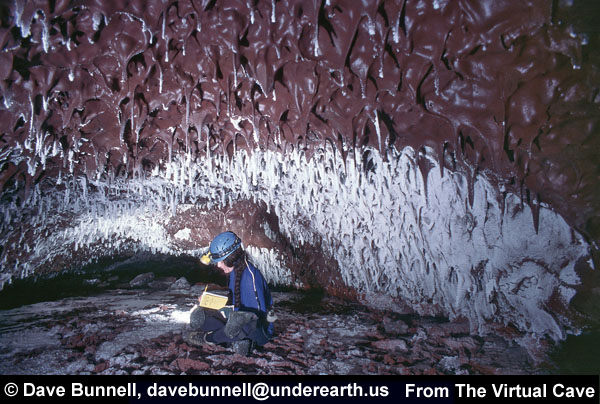
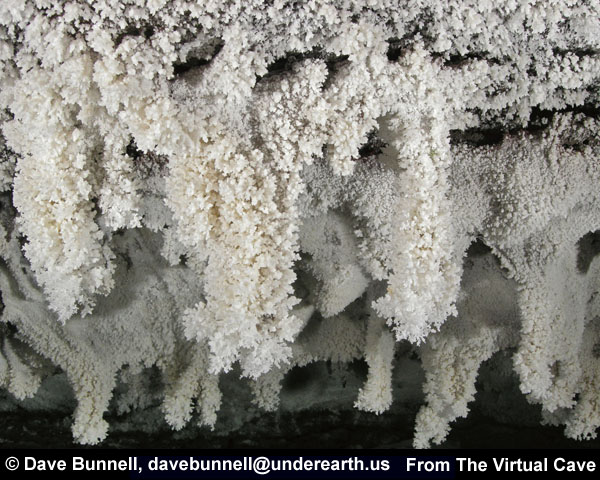
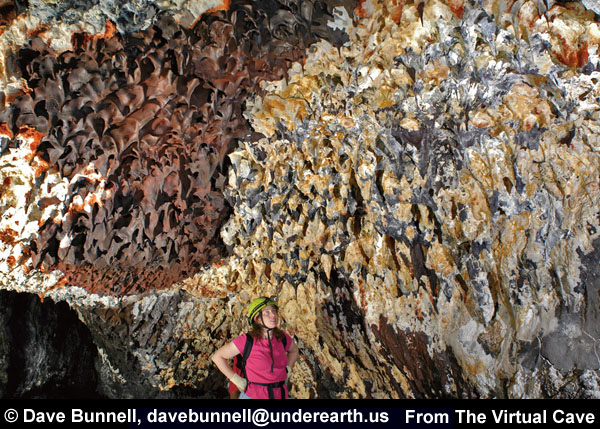
 |
 |
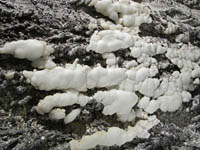 |
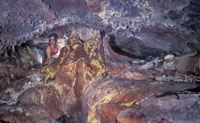 |
| Back to: | |
 |
Created: December 11, 2008 Author: Dave Bunnell |